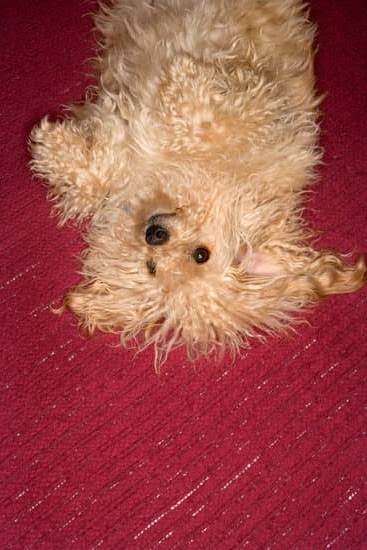Walking a hyperactive dog can be a challenging and frustrating experience for many dog owners. With their boundless energy and excitement, it can feel like an uphill battle trying to keep them calm and focused on the walk. However, with proper leash training, you can transform those chaotic walks into enjoyable and stress-free experiences for both you and your furry friend.
Leash training is not just about controlling your dog’s movements; it is also essential for their safety and your peace of mind. A hyperactive dog pulling or lunging on the leash can pose various risks, such as running into traffic, getting tangled in obstacles, or causing injury to themselves or others.
By investing time and effort into teaching your hyper dog how to walk on a leash properly, you are setting the foundation for a safe and harmonious walking routine.
As a dog owner with a hyperactive companion, you may have encountered common struggles during walks that leave you feeling overwhelmed and discouraged. Perhaps your dog constantly pulls on the leash, jumps up at every passerby, or becomes excessively reactive to other animals or stimuli.
These challenges can make even short walks feel like an exhausting ordeal. However, with the right techniques and strategies outlined in this article, you will learn how to address these issues effectively and create positive change in your dog’s behavior.
In the following sections of this article, we will provide you with a comprehensive guide on how to train your hyper dog to walk on a leash successfully. We will begin by assessing your dog’s energy levels and needs to tailor the training methods accordingly.
Next, we will delve into establishing a positive association with the leash as well as selecting the right equipment that suits your hyperactive pup’s unique requirements. Additionally, we will introduce basic obedience commands that are essential for maintaining control during walks.
By understanding the challenges of walking a hyper dog and implementing the training techniques discussed, you will be well on your way to enjoying stress-free walks with your beloved furry friend. So let’s get started on this journey to transform those wild walks into peaceful and enjoyable experiences for both of you.
Assessing Your Dog’s Energy Levels and Needs
Understanding your dog’s energy levels and addressing their specific needs is crucial when it comes to training a hyperactive dog to walk on a leash. Every dog is unique, and their energy levels can vary significantly from one another. By taking the time to observe and understand your hyperactive dog’s specific needs, you can tailor the training methods accordingly, leading to more successful leash training sessions.
One important aspect of assessing your dog’s energy levels is recognizing their natural temperament and breed characteristics. Certain breeds are known for having higher energy levels than others, such as Border Collies or Jack Russell Terriers. Dogs that have been bred for work or have herding instincts often possess a higher drive and require ample mental and physical stimulation to keep them satisfied.
In addition to considering breed characteristics, it is essential to observe your individual dog’s behavior patterns. Take note of when they are most active throughout the day and how long they engage in intense bursts of activity. This information will help you determine the best times for leash training sessions when your dog is likely to be more focused and receptive.
By understanding your hyperactive dog’s energy levels and specific needs, you can create a training plan that caters to their requirements. Ensuring that your dog receives sufficient mental and physical exercise apart from walking on a leash will help them release excess energy, making the training sessions more effective.
| Energy Level | Characteristic |
|---|---|
| High Energy Level | Dogs with high energy levels require frequent intense exercise and mental stimulation. |
| Medium Energy Level | Dogs with medium energy levels need regular exercise but may not require as much intensity as high-energy dogs. |
| Low Energy Level | Dogs with low energy levels may have shorter bursts of activity and may require less exercise, but mental stimulation is still beneficial. |
Establishing a Positive Association with the Leash
Leash training can be a challenge for any dog owner, but it can be especially daunting when dealing with a hyperactive dog. However, it is crucial to establish a positive association between the leash and your hyper dog in order to have successful walks.
This section will provide readers with valuable tips on introducing the leash to their hyper dogs in a calm and positive manner, as well as explain the importance of making the leash a source of excitement and anticipation for the dog.
To begin, it is essential to introduce the leash gradually and patiently. Start by letting your hyperactive dog sniff and explore the leash while remaining calm and relaxed. It may help to hold treats or toys near the leash to encourage your dog’s curiosity. If your dog becomes anxious or tries to pull away, give them reassurance through soothing words and gentle petting.
Once your hyper dog has become comfortable with the presence of the leash, you can move on to clipping it onto their collar or harness. Do this in a gentle manner, rewarding them with verbal praise and treats when they tolerate having the leash attached. Remember to keep these initial sessions short and positive.
It is equally important to make the leash an exciting object that triggers anticipation in your hyperactive dog. Use special cues or commands that signify that it’s “leash time,” which will signal fun activities like going for walks or exploring new environments. By creating this positive association, you can redirect their energy towards productive outlets during walks.
In summary, establishing a positive association with the leash is crucial for successfully training a hyperactive dog to walk on a leash. Take things slow, be patient, and reward progress with treats and verbal praise. The goal is to make the leash an object of excitement rather than anxiety for your hyperactive companion. With time and consistency, you’ll soon enjoy stress-free walks together.
| Tips for Establishing a Positive Association with the Leash |
|---|
| Start by letting your dog sniff and explore the leash in a calm and relaxed manner. |
| Hold treats or toys near the leash to encourage your dog’s curiosity. |
| Clip the leash onto your dog’s collar or harness gently and reward them with praise and treats. |
| Create special cues or commands that signify “leash time” to make it an exciting activity for your dog. |
Selecting the Right Equipment for Your Hyper Dog
When it comes to leash training a hyperactive dog, selecting the right equipment is crucial. The proper equipment can make a significant difference in your ability to manage your dog’s behavior and ensure both their safety and your own. In this section, we will discuss the various types of leashes and collars available in the market and offer recommendations on choosing the most suitable equipment for walking a hyperactive dog safely.
Types of Leashes
There are several types of leashes to consider when training a hyperactive dog. One popular option is a standard nylon leash, which provides durability and control. Another option is a retractable leash, which allows for more freedom of movement but may not provide as much control over your dog’s behavior. It’s important to choose a leash that feels comfortable in your hand and provides enough length to accommodate your dog’s energy levels without compromising safety.
Collar Options
Collars also play a significant role in managing a hyperactive dog during walks. Traditional flat or buckle collars are commonly used for everyday walks. They should fit snugly around your dog’s neck but not be too tight or restrictive. Martingale collars are another effective option, especially for dogs that tend to slip out of regular collars due to excitement or pulling. These collars tighten slightly when the dog pulls on the leash, discouraging them from doing so.
Another type of collar gaining popularity is the harness, which distributes pressure across the chest rather than focusing it solely on the neck. This can be particularly helpful for hyperactive dogs who tend to pull excessively during walks or have respiratory issues. Front-clip harnesses are designed specifically for strong pullers and give you more control over their direction without causing discomfort.
Choosing the Perfect Fit
Regardless of whether you opt for a traditional collar or harness, it’s crucial to choose the right size for your hyperactive dog. Ill-fitting equipment can cause discomfort and be less effective in controlling their behavior.
Measure your dog’s neck or chest circumference accurately before purchasing any equipment and refer to the manufacturer’s sizing guide. It may also be helpful to consult with a professional trainer or veterinarian who can offer personalized recommendations based on your dog’s specific needs.
By selecting the right leash and collar for your hyperactive dog, you can enhance your training efforts and create a safer and more enjoyable walking experience. Remember that different dogs may respond better to various types of equipment, so don’t be discouraged if you need to try different options before finding the perfect fit. With patience and persistence, you’ll be well on your way to successfully leash training your hyperactive dog.
Introduction to Basic Obedience Commands
In order to train a hyper dog to walk on a leash, it is essential to establish a foundation of basic obedience commands. These commands, such as “sit,” “stay,” and “heel,” provide structure and guidance for your dog during walks and help prevent unwanted behavior. Teaching these commands will not only make the walking experience more enjoyable, but also increase safety for both you and your dog.
Importance of Basic Obedience Commands
Basic obedience commands are fundamental in training any dog, but they are particularly crucial for hyperactive dogs. These commands establish boundaries and teach your dog self-control, which is essential when encountering distractions during walks. By teaching your hyperactive dog to listen and respond to these commands consistently, you can redirect their focus and reduce the likelihood of unwanted behaviors such as pulling, lunging, or jumping.
Step-by-Step Training Process
To train your hyperactive dog on basic obedience commands, it is important to break down the training process into manageable steps. Start with one command at a time and ensure that your dog fully understands and follows each command before moving onto the next.
Begin by choosing one command, such as “sit.” Hold a treat close to your dog’s nose and slowly move it upwards while saying “sit.” As their head moves up following the treat, their bottom will naturally lower into a sitting position. Once they are sitting, reward them immediately with praise and the treat. Repeat this process several times until your dog starts associating the word “sit” with the action.
Once they have mastered one command, gradually introduce new commands such as “stay” or “heel” using similar training techniques. It is important to be patient and consistent throughout the training process. Practice these commands in various environments to generalize their understanding.
Remember to always keep training sessions short and positive. Over time, with consistent practice and positive reinforcement, your hyperactive dog will become proficient in these commands, making walks on a leash much more manageable and enjoyable.
Gradual Desensitization and Counterconditioning
One of the most challenging aspects of walking a hyperactive dog is managing their reactions to various stimuli encountered during walks. To help your hyper dog overcome distractions and maintain focus, gradual desensitization and counterconditioning techniques can be highly effective. These methods aim to replace undesirable behaviors with more appropriate responses through systematic exposure and positive associations. Here are some practical techniques and exercises to gradually desensitize and countercondition your hyperactive dog:
- Start with a quiet environment: Begin training in a calm, controlled environment such as your backyard or a quiet park. This helps reduce distractions and allows you to focus on your dog’s behavior.
- Introduce triggers at a distance: Identify the specific triggers that cause your dog to become overly excited or reactive during walks, such as passing cars or other animals. Start by exposing your dog to these triggers from a safe distance where they can still remain relatively calm.
- Reward calm behavior: Whenever your dog exhibits calm behavior in the presence of a trigger, reward them with treats, praise, or their favorite toy. This helps create a positive association between encountering the trigger and receiving rewards.
- Gradually decrease the distance: Over time, slowly decrease the distance between your dog and the trigger while ensuring they remain relaxed. This process should be done gradually, allowing them to build confidence at each stage.
- Avoid punishment: It is crucial not to punish or scold your hyperactive dog for displaying unwanted behavior during these exercises. Punishment can exacerbate their anxiety or reactivity, making it harder for them to learn new, calmer behaviors.
By consistently practicing gradual desensitization and counterconditioning techniques, you can help your hyperactive dog become more comfortable and focused during walks. Remember to be patient, as progress may take time. Celebrate small successes along the way, and continue training with positivity and compassion.
Utilizing Structured Exercise and Playtime
One of the most important aspects of training a hyperactive dog to walk on leash is providing them with ample exercise and mental stimulation. Hyper dogs often have excess energy that can lead to unruly behavior during walks. By incorporating structured exercise and playtime into their routine, you can help drain that excess energy and make leash walks more manageable.
- Provide Daily Exercise: Start by making sure your hyper dog gets enough physical exercise every day. This can include activities such as brisk walks, jogging, playing fetch, or even participating in dog sports like agility or flyball. Aim for at least 30 minutes to an hour of exercise each day, depending on your dog’s age and breed.
- Mental Stimulation: In addition to physical exercise, it’s important to provide your hyperactive dog with mental stimulation. Mental exercises can tire out a hyper dog just as much as physical activities. You can engage your dog’s brain by teaching them new tricks or commands, playing puzzle games, or using interactive toys that dispense treats.
- Incorporate Training During Walks: Make the most of your leash training sessions by turning them into training opportunities for obedience and impulse control exercises. For example, practice asking your hyperactive dog to sit or stay at different intervals during the walk. This not only reinforces their training but also helps redirect their energy towards focusing on you rather than getting overly excited.
- Interactive Toys for Mental Stimulation: There are various interactive toys available in the market designed to mentally challenge dogs while rewarding them with treats or food puzzles. These toys require problem-solving skills from the dogs and keep them engaged for longer periods.
By incorporating structured exercise and playtime into your hyperactive dog’s routine, you can help channel their energy in a positive way and make leash walks more enjoyable for both of you. Remember to tailor the type and intensity of exercise based on your dog’s individual needs and consult with a veterinarian or professional dog trainer if you have any concerns. With consistent effort and patience, you can train your hyperactive dog to walk on leash calmly and safely.
Troubleshooting Common Challenges and Persisting Issues
Many owners of hyperactive dogs may face common challenges and persisting issues when attempting to train their pets to walk on a leash. It is essential to address these obstacles in order to ensure success and create a harmonious walking experience for both the dog and owner. In this section, we will discuss some of these challenges and offer troubleshooting tips to overcome them.
One common challenge when training a hyper dog to walk on a leash is pulling. Hyperactive dogs are often bursting with energy and may have difficulty containing their excitement during walks, leading them to constantly pull on the leash. To address this issue, it is important to teach your dog the “heel” command early on in the training process.
This command teaches your dog to walk calmly by your side, without pulling or lunging forward. Use positive reinforcement techniques, such as rewards and praise, when your dog successfully walks beside you without pulling. Consistency is key in reinforcing this behavior.
Another challenge that owners of hyperactive dogs may encounter is excessive barking or lunging at passing people or animals during walks. This behavior can be disruptive and make walks stressful for both the dog and owner. To address this issue, it is important to gradually expose your hyperactive dog to stimuli that may trigger such behavior in controlled settings. Begin by introducing these stimuli from a distance where your dog can still remain relatively calm.
Reward them for calm behavior with treats or praises. Gradually decrease the distance between your dog and the stimulus over time while continuously rewarding calm behavior. With consistency and patience, your hyperactive dog will learn to associate these stimuli with positive experiences rather than reactive behaviors.
Additionally, some hyperactive dogs may struggle with staying focused or easily become overwhelmed during walks, especially in busy environments with many distractions. To address this issue, implement structured exercises before going on a leash walk.
Engage your hyperactive dog in activities that help drain their excess energy beforehand so they are more likely to maintain focus and a calm demeanor during the walk. Mental stimulation, such as puzzle toys or obedience training sessions, can also help improve focus and impulse control.
By troubleshooting common challenges and persisting issues, owners of hyperactive dogs can overcome these obstacles and enjoy stress-free walks with their pets. It is important to remember that training takes time, patience, and consistency. With dedication and a positive mindset, you can create a strong bond with your hyper dog and turn leash walks into enjoyable experiences for both of you.
Conclusion
In conclusion, training a hyperactive dog to walk on a leash can be a challenging but rewarding process. By following the steps outlined in this article, you can establish a positive association with the leash, select the right equipment, introduce basic obedience commands, and gradually desensitize your dog to distractions. Additionally, providing structured exercise and playtime will help drain excess energy and make walks more manageable.
It is important to remember that patience and consistency are key when training a hyper dog. It may take time for your dog to fully grasp the concept of walking calmly on a leash, but with dedication and perseverance, you will see progress. Celebrate small victories along the way and continue reinforcing positive behaviors.
By implementing these strategies into your training routine, you will be able to enjoy stress-free walks with your hyperactive dog. No longer will walks be accompanied by pulling, jumping, or uncontrollable excitement. Instead, you and your furry companion will have peaceful and enjoyable outings together.
Remember, every dog is unique and may require different methods or techniques. It is essential to observe and understand your specific dog’s needs and adjust your training approach accordingly. With time, effort, and a little bit of patience, you can train your hyperactive dog to become an obedient walker on a leash. So get started today and start enjoying those stress-free walks.
Frequently Asked Questions
How do you calm an overexcited dog on a walk?
When dealing with an overexcited dog on a walk, it’s important to remain calm and patient. One effective approach is to stop walking and stand still, allowing your dog to calm down before continuing. Alternatively, you can redirect their attention by engaging in some basic obedience commands like “sit” or “down” to help them refocus.
Another helpful technique is to use positive reinforcement, rewarding your dog with treats or praise when they display calm behavior during the walk. It may take time and consistency, but with practice and positive reinforcement, you can help your overexcited dog become calmer during walks.
How do you train an unruly dog to walk on a leash?
Training an unruly dog to walk on a leash requires consistency and positive reinforcement. Begin by using a properly fitting harness or collar that doesn’t cause discomfort for your dog and attach a leash of appropriate length. Start training sessions in a quiet area with minimal distractions, gradually increasing the difficulty as your dog improves.
Use treats or rewards as motivators and guide your dog in the desired direction using gentle leash pressure techniques. If your dog pulls or becomes unruly during the walk, stop immediately, regain control of the situation, and resume once they have settled down. With consistent training sessions and positive reinforcement, an unruly dog can be trained to walk calmly on a leash.
How do I get my dog to stop pulling on leash and walk?
To prevent pulling on the leash while walking your dog, it’s crucial to teach them loose-leash walking techniques through consistent training. Start by ensuring you have a well-fitted harness or collar that distributes the pressure evenly without causing discomfort to your furry companion. Use treats as positive reinforcement during training sessions while practicing loose-leash walking exercises in low-distraction environments such as your backyard or hallway.
As soon as your dog begins pulling on the leash, stop walking immediately and wait until they relax before proceeding forward again. By being consistent with this approach and rewarding good behavior while ignoring pulling tendencies, you can train your dog to stop pulling and walk calmly on a leash.

Welcome to the blog! I am a professional dog trainer and have been working with dogs for many years. In this blog, I will be discussing various topics related to dog training, including tips, tricks, and advice. I hope you find this information helpful and informative. Thanks for reading!





